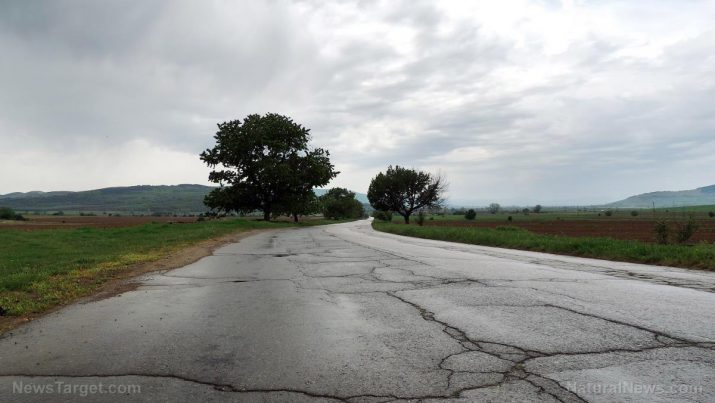Displacement planning tips for preppers: Securing supplies, safety guidelines and communications
Wednesday, October 16, 2019 by Arsenio Toledo
http://www.bugout.news/2019-10-16-displacement-planning-tips-for-preppers-communications.html

If you’ve been forced to displace and seek shelter far from your home, you need to get to your destination before your supplies run out all the while ensuring your safety. This is by no means an easy task, but with some proper training and preparation, it can be easier to get through. (h/t to SurvivalBlog.com)
Pack the essentials
Whether you’re going off on foot or by car, you need to maximize the amount of space in your storage. Food, water, a first aid kit, perhaps a change of clothes, and camping supplies are essential, but you also need to learn where to draw the line on how much of each item to bring.
Water is definitely important – but how much should you carry? Can you switch out a gallon or two for purification tablets and water filters? Canned food sounds like a good idea until you consider how much they weigh. The same logic will apply to everything you plan to bring with you. Whether it’s your bug-out bag or the trunk of your car, remember: Every ounce counts, and you need to reconsider every single item you want to bring. One pound too light and you’re wasting space. One pound too heavy, and you might break your back.
As soon as you’ve figured out what you’re packing, write it down in a list and make copies. To be fully prepared, consider practicing packing, especially if you’ll be traveling in a car and need to learn how to bug out quickly. Being quick out the door may mean the difference between being stranded at home and being on the road to your bug-out location (BOL). (Related: How to pack your bug-out bag like a survival expert.)
Avoid dangerous situations
If you need to get to your BOL quickly, chances are you can’t rely on many of today’s safety mechanisms. The police might not be around, and other first responders may be stretched too thin, so you’ll have no one other than yourself to look to for your own safety.
Plan your routes beforehand, with an emphasis on avoiding possible chokepoints such as large urban centers and major highways where you can get bogged down by the mass of people. Even when you’re away from cities and roads, reevaluate whether it would be a good idea to make contact with strangers. This means doing your best not to attract attention. You need to camouflage yourself, as well as the trail you leave behind. People will be able to find you when you’re burning those logs you use to cook with, and they’ll definitely be able to spot your car from the side of the road. Getting spotted can cost you your supplies – or worse, your life.
That’s why it’s important to be armed. You don’t want to be unprepared during a situation with the potential to turn violent. You don’t need an assault rifle (although if you have it, bringing it is a good idea), but having even a .22 handgun can come in handy. Some guns are better for this situation than others, so make sure you do your research before going out to the store.
Communication is key
Especially if you’re traveling in a group, you’re going to need to figure out how to communicate. Bringing your smartphone along may sound like a good idea, but if things are dire enough that you need to leave your house, will cell service really be reliable enough? And when your phone battery runs out, what then?
If you don’t want to be unprepared, perhaps try investing in a good radio. Family Radio Service or Citizen Band radios are reliable and relatively inexpensive; however, the limited number of channels means a higher risk of your calls being overheard. A ham radio has the farthest range, and they have many more available channels. However, a license is required to operate a ham radio, as it requires a lot of skill. Evaluate which radio will be the best option for you.
For closer distances, whistles and unique call-outs work easily. Flares can be very effective for emergency situations when you really need that backup, but they draw a lot of attention so be wary of using them.
It’s a long road from your home to your BOL. Displacement planning requires a lot of preparedness. This means stocking up on essential gear and supplies, as well as finding the time to practice your route and how you’ll get to your destination. It’s going to be difficult, but with the right amount of preparation, the journey may not be as hard as you imagine.
Sources include:
Tagged Under: Tags: BOBs, bug out, bug out bag, bug out car, bug out vehicle, bugging out, camo, camouflage, CB radio, Collapse, communication, disaster, disaster preparedness, displacement, emergency preparedness, food supply, FRS radio, grid collapse, guidelines, gun safety, guns, ham radio, how-to, navigation, off-grid emergencies, packing, personal safety, personal security, preparedness, prepper, prepping, prepping weapons, radio, safety, self sufficiency, self-defense, self-reliance, self-sustainability, SHTF, supplies, survival, survival emergencies, survival gear, survival skills, survival supplies, survival tools, survival weapons, survivalist, surviving collapse, water supply, weapons

